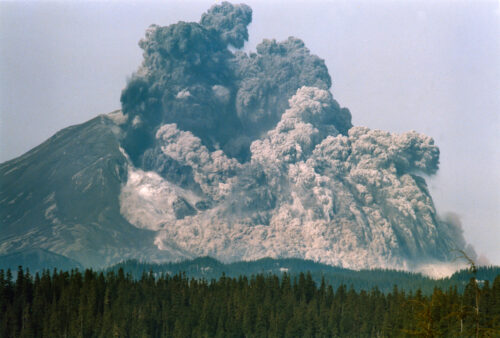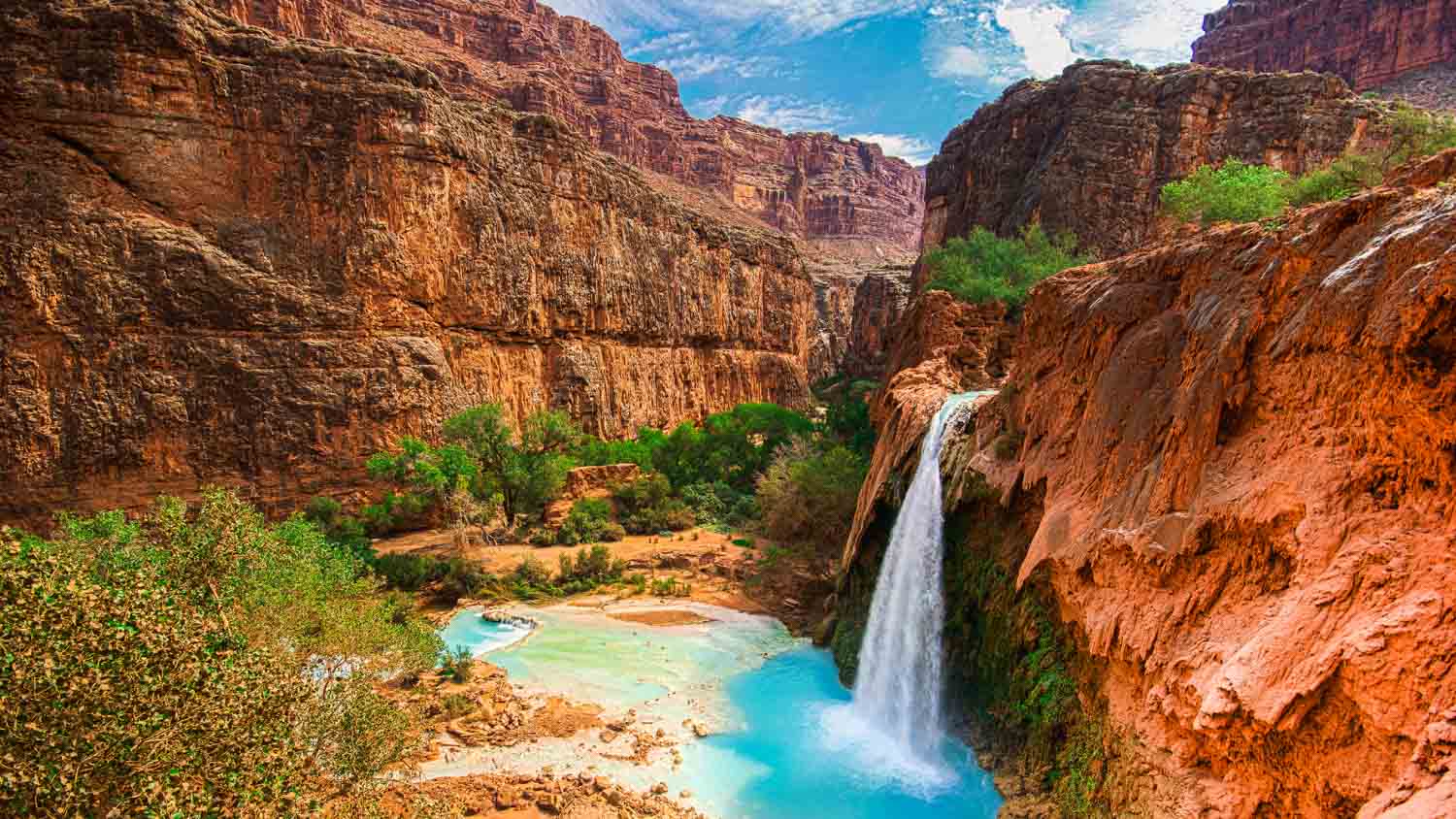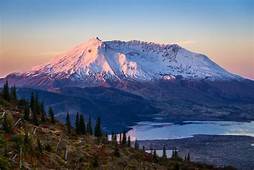The majesty of the Grand Canyon is something that simply takes one’s breath away. I’ve seen some people standing by the guard rails looking out over the grandeur of this awe-inspiring landscape with tears running down their cheeks. It is certainly one of the most incredible sites to behold. Many stand and wonder how something like could have been formed. The standard evolutionist theory suggests that it took around six million years for the Colorado River to cut through the rocks to that depth through a process called gradualism, and eventually have what we see before us in all of its splendor; and most of the geologists still hold to that idea. As Christians, we believe that God caused the earth to flood approximately 4000+ years ago killing ALL life – humans and land animals – with the exception of Noah, and his family and of course two of every animal kind. We are all familiar with this story. For many, especially in the scientific community, the Biblical flood just does not seem plausible and when brought up in conversation, becomes the subject of jokes and ridicule. Well back in May 18th, 1980, something happened that brought the entire evolutionist theories into serious question.
Probably the m
For years traditional belief held that the Grand Canyon was formed slowly over millions of years by a stream gradually eroding away the sediments; however, a mud flow caused by a subsequent eruption of Mt. St. Helens in March of 1982 eroded a canyon out of solid rock 1/40 the depth of the Grand Canyon in just ONE DAY! This event brought many to realize that catastrophic agents can form canyons very rapidly and that streams do not cause these canyons. Rather, the streams are there because of the canyons. Furthering this theory, a LANDSAT photograph of the Grand Canyon shows that it passes through an elevated plateau, suggesting the Colorado River could not have formed the canyon because rivers flow around hills, not over them.
There is evidence that on the upper end of the Grand Canyon there was once a great lake the size of an average state. Where would such a lake come from? After a good rain, there are mud puddles left behind. Likewise, after a world-wide flood like that of Noah’s day, the earth would be left with many lake size mud puddles. It seems that there was such a lake left behind in this upraised elevation. Perhaps it was even damned up because of an ice glacier formed during the ice age. In fact, Noah’s Flood provides a source for the ice age. The waters before the Flood were warmer due to the different environment we lived in. Then, when the Flood came, the earth broke open as Genesis tells us which would cause great earthquakes and volcanoes. Volcanoes put gases into the atmosphere that we now know scientifically cause colder climates. The warm water evaporated quickly and came down in snow and ice. Because of the colder climates, the summers did not melt enough of the ice away and the next winter the ice simply got thicker throughout the ice-age. We suspect that this would last about 100-500 years because just as an earthquake has after-shocks, a volcano has smaller eruptions occurring for years after its initial explosion. Mount St. Helens had over 6 lava domes built up in its center that were later blown out from smaller eruptions going on during this period of stabilization. Therefore, if a glacier damned up this lake towards the end of the ice-age the dam may have broken allowing this water to run through the upraised elevation quickly and carving out the Grand Canyon just like those carved out at Mount St. Helens as a result of mud flows.
We often underestimate the power of running water. A few years ago, the dam at the Grand Canyon was overflowing and water needed to be let out through the underground emergency release outlets. This area was reinforced with over 30 feet of concrete and steel reinforced bars. In less than seven seconds the water that was being released turned red. Why? Because the concrete and steel had been eroded away and the iron rich bedrock was now being destroyed. Seven seconds to erode through solid concrete and steel yet people scoff at the idea of a global flood carving out the Grand Canyon. However, scientifically speaking, it is most probable that the Grand Canyon was carved out quickly by running water as it broke free from the ice dam created by the ice-age through Noah’s Flood. Still, other evidence of Noah’s Flood is seen through Mount St. Helens. Dr. Steve Austin did graduate research at Specimen Ridge in Yellowstone Park. There we see fossilized trees standing in 27 distinct layers covering hundreds of feet of strata. The signs at the park explain how a forest grew and was destroyed by a volcano. Then about 10 to 20 thousand years later another forest had grown but it, too, was destroyed by a volcano and fossilized the tree trunks. This happened over 27 times throughout millions of years which is why they say we find 27 layers of fossilized trees. Mount St. Helens provided a more logical and certainly a more scientific (observable) explanation. About 1 million logs were deposited on top of Spirit Lake as a result of the 1980 eruption. Ten years later half of those logs had disappeared. Where did they go? To the bottom of the lake. Steve Austin discovered that when logs float in water they become water logged. Eventually, one end of the log falls down while the other end floats with its upper edge on top of the water.
Not long after this the entire log will sink to the bottom but will remain standing in an upright position. As time goes on sediments build up around the log and it is buried upright, having the appearance that it grew there. Dr. Austin went scuba diving and found that some logs were buried deep enough that they could not be shaken. Others could be wiggled and still others could be tipped over, therefore, proving the logs fall at different times and are deposited in different strata layers. Furthermore, the so-called fossilized forests at Specimen Ridge have no evidence of tree roots growing in these places. Likewise, the same is seen with the trees at Spirit Lake. Therefore, Mount St. Helens showed how Noah’s Flood could have carried logs to certain locations where they would have eventually become water logged and settle to the bottom of a lake (big mud puddle left from the Flood).
Since there are still many logs floating on Spirit Lake today, this is evidence that the logs after the flood could take over 50 years to fall down and would therefore be buried in different strata layers leaving exactly what we see at Specimen Ridge. Another interesting fact about the logs on Spirit Lake is that they are missing their bark because the wind blew the trees together and the bark was rubbed off. Over three feet of tree bark sediment was found at the bottom of Spirit Lake. If one looks at coal today it is a layered organic material that is 25% tree bark. This is one of the reasons evolutionists say that coal was formed from a swamp that deposited hundreds of feet of bark and vegetation over millions of years. One problem with this theory is that we would need a stack of vegetation miles thick to get some of the compressed coal seams we see today. A swamp cannot provide this amount of material. A second problem is that in scientifically observing drained swamps today the organic peat is a coffee ground texture because of all the roots penetration through it. The peat is not layered like coal is today, nor does the coal show any evidence of root penetration.
Noah’s Flood provides a better explanation for the origin of coal. As floods do today, much vegetation would be gathered together in general locations. With fossil evidence showing plants to be hundreds of times taller and thicker than we have today one could expect the gathered vegetation to be miles thick, exactly what we need for the amount of coal we see today. Then, the continents could float over top of this vegetation and settled tree bark providing the necessary means for coal to form. When I went to school I was taught that coal took millions of years to from. This is not true as coal can be formed in a laboratory in under 20 minutes if the right conditions are present. What are those conditions? Heat and pressure and the heat doesn’t have to be constant, it only needs to be there to begin with and then have a catalyst to keep the chemical reaction going. We have found that the catalyst is volcanic ash. Noah’s Flood provided all of these necessary conditions for coal to form. Spirit Lake could have the necessary conditions for coal to form now if it would only be buried by another eruption.
Another criticism of Noah’s Flood was how the animals could have survived afterwards. Mount St. Helens also answered these critics as the elk returned 400 years before they were supposed to. Not only have they returned but they have flourished just as the animals that got off the ark must have done. Mount St. Helens not only showed us how the Flood of Noah could have deposited our coal seams but also many of our national parks and great canyons. We also see how the slow and gradual strata layer build up is also false and that just because something is buried under 600 feet of laminated matrix does not mean it is millions of years old. In fact, it may only be 21 years old.
This volcano has caused many evolutionists to rethink their ideas of how the Grand Canyon was formed. Though they are not willing to accept Noah’s Flood, local floods are being proposed. The Bible says God, “touches the mountains, and they smoke” (Ps 104:32). And, “Come and see the works of the LORD, the desolations He has brought on the earth” (Psa 46:8). God has left us evidence of His works and they all speak of His judgment on a sinful world, but also of His mercy to all who enter the door of salvation, Jesus Christ who is our ark to deliver us through the coming destruction.
*The views and opinions expressed on this website are solely those of the original authors and contributors. These views and opinions do not necessarily represent those of Spotter Up Magazine, the administrative staff, and/or any/all contributors to this site.


